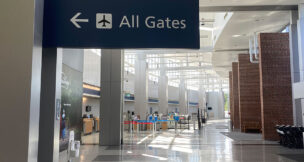Union membership rises slightly in Virginia
The percentage of Virginia workers belonging to unions rose slightly last year, according to information from U.S. Bureau of Labor Statistics.
A BLS summary on union membership showed Virginia with 180,000 union members last year, 5 percent of a total wage and salary workforce of 3.6 million.
That percentage represents an increase of six tenths of a percentage point from 2012, when the commonwealth had 159,000 union members, 4.4 percent of 3.59 million employees.
Nationwide the percent of workers belonging to unions was 11.3 percent in 2013, unchanged from 2012.
Thirty states had union membership rates lower than the national average last year while 20 states were higher.
Union workers nationwide had median weekly earnings of $950 last year compared with $750 for nonunion workers. The BLS, however, noted that other factors in addition to collective bargaining agreements influenced the difference in earnings, including variations in the distribution of union workers and nonunion employees by occupation, industry, firm size or geographic region.
New York had the highest rate in 2013, 24. 4 percent, while North Carolina had the lowest, 3 percent.
In addition to North Carolina and Virginia, states that had rates of 5 percent or lower in 2013 included: Arkansas, 3.5 percent; Mississippi and South Carolina, 3.7 percent; Utah, 3.9 percent; Idaho, 4.7 percent; South Dakota and Texas, 4.8 percent, Louisiana, 4.3 percent and Arizona, 5 percent.
In other states bordering Virginia, the union membership rate in 2013 was 11.6 percent last year in Maryland, 12.7 percent in West Virginia, 11.2 percent in Kentucky and 6.1 percent in Tennessee.
The District of Columbia’s union membership rate was 9.3 percent last year.
Nationally, public-sector workers had a union membership rate of 35.3 percent, more than five times higher than the rate for private-sector workers, 6.7 percent.
s
















